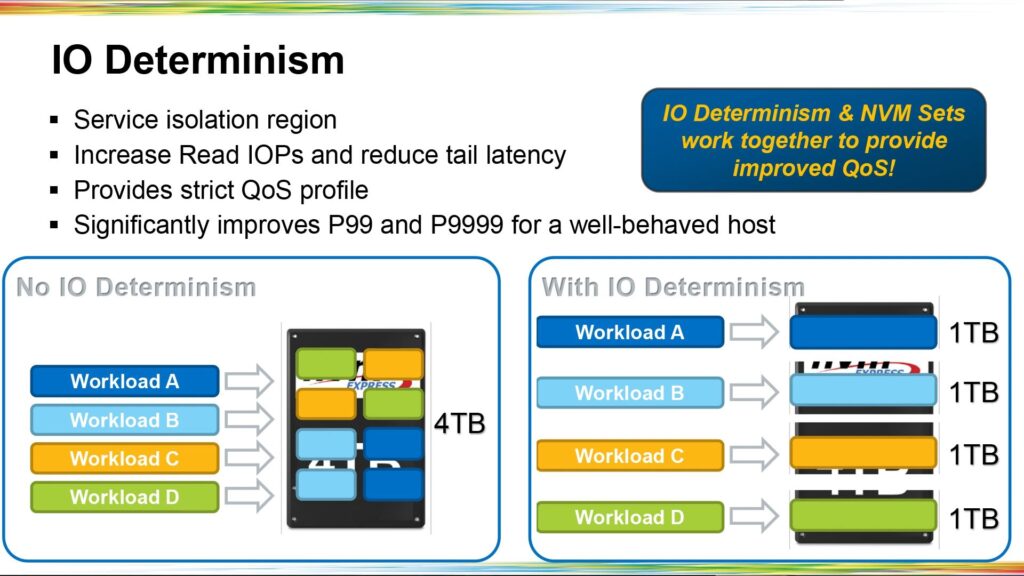Non-Volatile Memory Express (NVMe) technology has revolutionized storage in modern computers, offering faster speeds and better performance than traditional storage technologies like SATA and AHCI. As NVMe continues to evolve, two versions stand out: NVMe 1.3 and NVMe 1.4. But how do these versions compare, and which is the better option for your system? This article delves into the differences, improvements, and technical aspects of NVMe 1.3 and NVMe 1.4, shedding light on the enhancements NVMe 1.4 brings to the table.

What is NVMe?
Before diving into the differences between NVMe 1.3 and 1.4, let’s take a moment to define what NVMe is.
NVMe (Non-Volatile Memory Express) is a protocol used to access high-speed storage devices like SSDs (Solid-State Drives) through the PCIe (Peripheral Component Interconnect Express) interface. NVMe drastically improves the speed of data transfer compared to older storage interfaces, such as SATA, offering low latency and high throughput.
Key Features of NVMe:
- Low Latency: NVMe provides faster response times and reduces bottlenecks in data processing.
- High Throughput: NVMe allows more data to be transferred per second, optimizing performance in tasks like gaming, video editing, and data-heavy computing.
- Parallelism: NVMe drives utilize multiple queues, allowing for simultaneous read and write operations.
NVMe 1.3 Overview
Released in 2017, NVMe 1.3 introduced several notable features, including increased support for power management and improved error correction. This version was a significant upgrade over previous iterations, making NVMe more accessible for mainstream users.
Key Features of NVMe 1.3:
- Improved Power Management: NVMe 1.3 included power management features that optimized power consumption without compromising performance, which is particularly useful for portable devices like laptops.
- Enhanced Error Recovery: The addition of improved error recovery mechanisms helped to reduce system crashes and data corruption.
- Namespace Management: This version introduced support for namespace management, allowing users to partition a drive into multiple logical units for better storage management.
Benefits of NVMe 1.3:
- Improved power efficiency for laptops and portable devices.
- Enhanced error correction to ensure more reliable operation.
- Better support for multi-drive setups with namespaces.
However, as technology progressed, the need for even more performance and features led to the development of NVMe 1.4.
NVMe 1.4 Overview
NVMe 1.4, released in 2019, built on the foundation set by NVMe 1.3 while introducing more advanced features and optimizations that offered tangible benefits, especially in high-performance computing environments.
Key Features of NVMe 1.4:
- Support for Zoned Namespaces (ZNS): NVMe 1.4 added support for Zoned Namespaces, which allows drives to manage storage in larger, more efficient zones, leading to better performance in specific workloads like enterprise-level applications.
- Improved Host Memory Buffer (HMB) Support: NVMe 1.4 improves support for using the system’s memory as a cache, which speeds up operations, particularly for entry-level SSDs that lack DRAM caches.
- Enhanced Power Loss Protection (PLP): NVMe 1.4 comes with better power loss protection, ensuring that data remains safe and consistent during sudden power outages.
- Increased Queue Depths: NVMe 1.4 allows for larger queue depths and more command sets, improving the performance of high-end, multi-threaded applications.
Benefits of NVMe 1.4:
- Enhanced performance in high-demand applications, thanks to Zoned Namespaces and improved HMB support.
- Better data protection with enhanced power loss protection mechanisms.
- Increased scalability and better overall drive management with support for larger queues.
NVMe 1.3 vs NVMe 1.4: A Detailed Comparison
To better understand the key differences between NVMe 1.3 and NVMe 1.4, let’s break down their features in a side-by-side comparison:
| Feature | NVMe 1.3 | NVMe 1.4 |
| Release Year | 2017 | 2019 |
| Power Management | Enhanced power management for mobile devices | More advanced power loss protection and optimizations |
| Error Correction | Improved error recovery | Enhanced error correction with power loss protection |
| Namespace Support | Introduced namespace management | Expanded namespace management and support for Zoned Namespaces |
| Queue Depth | Standard queue depth support | Increased queue depths for better parallelism and multi-tasking |
| Host Memory Buffer (HMB) | Basic support for HMB | Advanced HMB support, improving drive speeds |
| Performance in High-Demand Tasks | Good for general use | Optimized for enterprise-level tasks and heavy workloads |
| Data Protection | Basic protection | Enhanced data protection through PLP (Power Loss Protection) |
What’s New in NVMe 1.4?
Zoned Namespaces (ZNS)
One of the most significant innovations in NVMe 1.4 is the support for Zoned Namespaces (ZNS). ZNS allows storage devices to group data in “zones,” improving sequential writes and offering better utilization of NAND flash memory. This feature is particularly beneficial for workloads that deal with large amounts of sequential data, such as video editing, databases, and enterprise applications.
Host Memory Buffer (HMB) Support
NVMe 1.4 improves support for Host Memory Buffer (HMB), a technique that uses system memory as a cache for SSDs. This improvement is particularly beneficial for entry-level SSDs that lack DRAM caches, enhancing read and write speeds in these devices.
Power Loss Protection (PLP)
With NVMe 1.4, Power Loss Protection (PLP) has been improved, which ensures that the drive’s data integrity is maintained even if the system experiences a sudden power outage. This is crucial for enterprise-level applications and for users working with sensitive data.
Which One Should You Choose?
For General Use and Budget-Friendly Builds:
- NVMe 1.3 should suffice for users who require a solid SSD with improved power management, error recovery, and basic namespace management. It’s a great choice for everyday computing tasks and gaming.
For High-Performance and Enterprise Builds:
- NVMe 1.4 is ideal for those who demand the best performance, particularly in high-demand tasks such as data processing, video editing, or enterprise environments. Its improvements in power loss protection, Zoned Namespaces, and HMB support make it the better option for professional workloads.
Conclusion
In conclusion, NVMe 1.4 offers several advancements over NVMe 1.3, particularly for users who require higher performance, better data protection, and support for large-scale storage management. However, NVMe 1.3 remains a strong contender for general users who want good performance at a lower cost.

